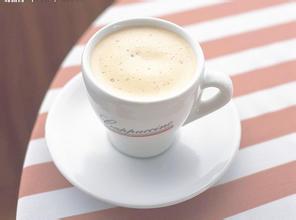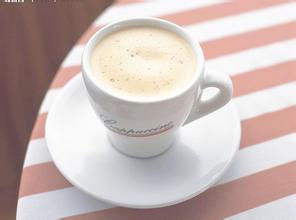South American coffee producing countries-El Salvador coffee beans
The Pacamara species of sa must first introduce the Pacamara Manor. In Ecuador in 1984, the fascists could buy the Pakamara Coffee Garden as the new owner. The Falesco family has been growing coffee in the Apaneca mountains since their grandparents for more than a hundred years. Urgado wanted to take a different path from his grandparents and decided to plant a new species, Pacamara, which had just been developed from the agricultural technology unit of Saudi Arabia. He found that this new species had a large and beautiful appearance, and could show a good flavor and aroma under excellent local conditions. He found new hope and found the rising star in his mind, but the first harvest turned out to be the beginning of hard work.
Pacamara bean shape is too large, in the treatment field for peeling and separation, often stuck in the holes or gaps of the machine, the machine must be adjusted from time to time to deal with separately. Due to the limited initial output of Pacamara, coupled with the fact that there are few large seeds in the country, most washing plants lack experience in dealing with large coffee fruits, not to mention extra sieves with larger mesh to specially deal with Pakamara species, so they are naturally reluctant to deal with new species. The problem of wet treatment after harvest will not be solved until 1990 when the Awasan Cooperative released its goodwill and was willing to sign a contract with Ecuador. After Urguado has no worries, with more skilled planting techniques, harvesting coffee cherries with the same maturity, and careful post-harvest treatment, finally make the Pacamara species of Pacamara estate shine! I won the 24 place in 2003, the seventh place in 2005 and the runner-up in 2008, when I and Japan's Maruyama Coffee jointly awarded the runner-up batch.
The introduction of new varieties is always a painstaking and high-risk attempt, not to mention the high probability of failure, but if it succeeds, everyone will follow, but if we do not try to innovate, we will never wait for the chance of success. The suffering of coffee farmers is inadequate. The highest grade of Salvadoran coffee is SHG (Strictly High Grown) or SHB (Strictly Hard Bean). One of the characteristics of coffee in El Salvador is the variety of coffee trees, from the bourbon series to classical coffee trees. The coffee trade in El Salvador is mainly carried out by a small number of wealthy farmers with many farms, while small-scale farms and workers are harmed. But the democratization movement and decades of civil strife have changed everything, especially the improvement of coffee quality and the activation of small farms.
Pacamara was bred in 1957 by Salvadoran agricultural scientists taking into account factors such as the size of coffee beans. The San Leticia Manor is located in the Apaneca volcanic area west of El Salvador, with an average elevation of 1400 meters above sea level. The geology belongs to sandy soil and volcanic soil, the soil is fertile, and the warm and humid climate with an average annual rainfall of more than 2000 mm is considered to be the best producing area for growing coffee in El Salvador.
Although Pacamara is a mating species of elephant bean and bourbon variety Pacas, it inherits the large body of elephant bean, which is much better than other Arabica, and its flavor is described by cup test as changing multi-segment El Salvador Pacamara.
Full name: El Salvador SHG EP, PACAMARA "Santa Leticia"
Region: Apaneca
Manor / exporter: Chateau Saint Leticia
Particle size: 18 stroke 19 (96%)
Variety: Pacamara
Harvest time: February to April
Altitude: 1200M~1750M
Moisture: 12.2%
Treatment: washing
Cup test information: citrus, passion fruit, sweet and sour flavor, smooth, caramel, bright

Important Notice :
前街咖啡 FrontStreet Coffee has moved to new addredd:
FrontStreet Coffee Address: 315,Donghua East Road,GuangZhou
Tel:020 38364473
- Prev

Introduction of Coffee Variety Manor Costa Rica Coffee Manor-Lajas Manor
Tarasu, Costa Rica, Tarasu (T origin arrazu) is one of the major coffee producing areas in the world. The coffee produced is light and pure in flavor and pleasant in aroma. Costa Rica, with its fertile volcanic soil and good drainage, is the first country in Central America to grow coffee and bananas for commercial value. Coffee and bananas are the country's main exports. Extra hard bean
- Next

Washed beans-Highland Honduras Coffee beans San Juan Xido producing area
High-quality coffee in Honduras uses water washing to deal with coffee beans, usually after soaking, when the defective fruit will surface, it can be discarded first. Then put the good fruit into the fruit peeling machine and peel off the peel with the rotating force of the machine. Peeled fruits are screened by machines to select fruits of high quality. Usually the bigger the fruit.
Related
- Does Rose Summer choose Blue, Green or Red? Detailed explanation of Rose Summer Coffee plots and Classification in Panamanian Jade Manor
- What is the difference between the origin, producing area, processing plant, cooperative and manor of coffee beans?
- How fine does the espresso powder fit? how to grind the espresso?
- Sca coffee roasting degree color card coffee roasting degree 8 roasting color values what do you mean?
- The practice of lattes: how to make lattes at home
- Introduction to Indonesian Fine Coffee beans-- Java Coffee producing area of Indonesian Arabica Coffee
- How much will the flavor of light and medium roasted rose summer be expressed? What baking level is rose summer suitable for?
- Introduction to the characteristics of washing, sun-drying or wet-planing coffee commonly used in Mantenin, Indonesia
- Price characteristics of Arabica Coffee Bean Starbucks introduction to Manning Coffee Bean Taste producing area Variety Manor
- What is the authentic Yega flavor? What are the flavor characteristics of the really excellent Yejasuffi coffee beans?

